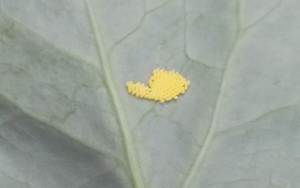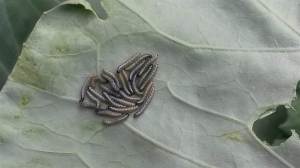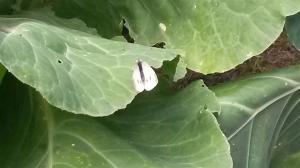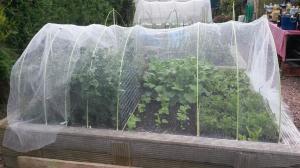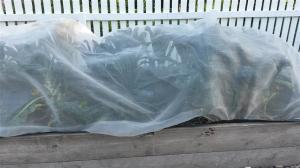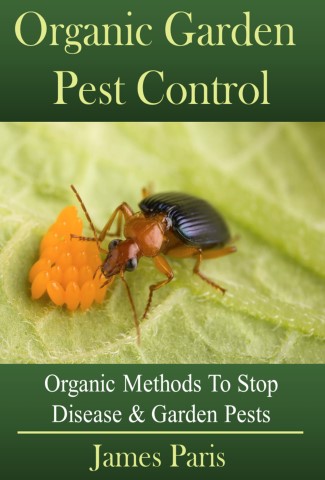The Cabbage White butterfly
The scourge of vegetable gardeners is without doubt the ‘Large White’ butterfly ( Pieris brassicae). This is often confused with the ‘Small White; butterfly which in turn is often referred to as the Cabbage Moth – just to keep things interesting!
The fact is that both of these critters can have a devastating effect on any of your brassicas – though they do seem particularly keen on cabbages (the clue being in the name I suppose). However cauliflower and brussels sprouts plants are also well in their sights, and they can reduce your prize plants to a ragged skeleton in just a few days if left unmolested.
Here are a couple of examples of what you can expect after a visit from the Large White Cabbage butterfly..
Signs that your veggies are on their ‘hit list’ are easy to see, as the cabbage white butterfly dances around your vegetable patch occasionaly alighting on your prize possesions.
butterfly dances around your vegetable patch occasionaly alighting on your prize possesions.
They look absolutely charming as they flutter around, and indeed would be quite welcome normally as good pollinators for fruit bushes or other flowering plants.
For the brassicas however they spell death and destruction and so something has to be done about them if your crop is to be saved.
How To Protect Your Brassicas:
With regards to this ‘cabbage predator’ then there is no doubt in my mind that prevention is far more effective than the cure. And the best way to protect your crops is to prevent the butterfly from landing on them and laying their eggs in the first place 🙂
This can be done very easily in a Raised Bed system, however even in a traditional row garden it is s simple matter to apply either gardeners fleece or fine gardeners insect mesh over your crops as soon as they are planted.
One of the drawbacks to this system I have to admit, is simply the fact that the mesh has to be lifted every time you want to do any kind of maintenance or plant care. However it is s small price to pay when you consider the alternatives perhaps!
Organic Insect Sprays:
Organic sprays play a major role in companion planting and organic planting ventures. You can use a variety of home-made sprays that will help to keep a variety of insects at bay.
I have used all these methods below with varying success, and I would say that the drawback with them is that the butterflys are very mobile and will visit your garden daily.
This means that any spraying that you do will have a rather short-lived effect as new eggs are laid – it is in effect an on-going battle between you and the Butterfly 😉
Garlic, chille and vinegar all make good sprays. However I have found that the most effective against the caterpillars in the vinegar spray.
Simply add a tablespoon of vinegar to a 1 pint hand sprayer and spray on the caterpillars and the underside of the leaves. Sometimes I increase this dosage to 3 tablespoons if it is not having the desired effect, however be aware that theb plant itself might suffer if the dosage is too strong – try a leaf before-hand and check for a day or two that there is no adverse effects.
With the garlic and chillie sprays. Place a 3-4 chillies or 1 garlic clove in the container and leave for a few days to infuse, then spray all over the plants, especially under the leaves.
The addition of a few drops of washing up liquid (or organic insecticidal soup) will help the mixture stick to the plant and give it a longer effective lifetime – as well as add its own deterrant value.
Hand Picking:
Sometimes the best solution is to simply pick off the caterpillars as you see them – and then treat the plants. Leaves that are badly damaged and infected I usually just cut off and destroy completely.
It’s an on-going battle all right – but fore-warned is fore-armed, and it is a battle that you must win if you are to gain any benefit from your planting efforts rather than just the exercise 🙂

